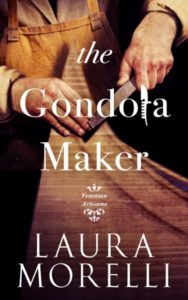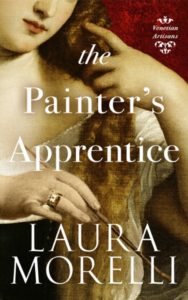Tell us about yourself – where do you live and what do you do when you’re not writing?
I grew up in the state of Georgia and still spend as much time as possible there. It was a wonderful childhood, climbing trees, riding horses, playing in the barn with cows and chickens, fishing, and turning over rocks. There were not many kids around and I was an only child for seven years, so I learned to entertain myself. I was a bookworm. I read everything I could get my hands on; the used bookstore in town was one of my favorite spots. I still remember the smell of it! I dreamt of writing books and I don’t think I ever doubted that one day, I would be an author.
However, for much of my life I’ve been a professional student, attending everything from community college, state university, liberal arts college, and finally the Ivy League. I earned a B.A. in Romance Languages & Literatures from the University of Georgia, a M.A. in Art History from Tufts University, and a Ph.D. in Art History from Yale University. I have been writing, researching, and teaching art history ever since. I lived overseas for ten years, mostly in Europe, which has informed much of my writing. Oh, and I also stay busy wrangling a husband, four children, and a dog.
Can you give me a brief picture of your personal journey as a writer
 After teaching college art history and living in Italy through the 1990s, I wrote a specialty guidebook called Made in Italy that I sold to Rizzoli. After that, I wrote other books in that series, including Made in France. I’ve also published several city guides. With these guidebooks, my mission is to lead travelers beyond the tourist traps to discover authentic local traditions and artists, and come home with great treasures in their suitcases.
After teaching college art history and living in Italy through the 1990s, I wrote a specialty guidebook called Made in Italy that I sold to Rizzoli. After that, I wrote other books in that series, including Made in France. I’ve also published several city guides. With these guidebooks, my mission is to lead travelers beyond the tourist traps to discover authentic local traditions and artists, and come home with great treasures in their suitcases.
The story of The Gondola Maker, my first work of fiction, developed while I was working on Made in Italy. The living artisans I interviewed, whether makers of gondolas, carnival masks, or Murano glass, told me how important it was to them to pass on the torch of tradition to the next generation. I began to wonder what would happen if the successor were not able… or willing. The characters of the gondola maker and his son began to take shape, and I felt compelled to bring that story to life. Now I focus mostly on writing art historical fiction; I feel that’s what I was meant to do all along!
How do you feed your creative engine? Where do you look, or what do you do, to keep the inspiration flowing?
Reading, travel, historical research, looking at art books, thinking about the challenges people faced in a pre-modern world… These are the things that fuel me. The city of Venice has inspired me for many years. If you described Venice to someone who had no prior knowledge of it, they might think you were making it up. It’s mind-boggling to think that the entire built environment of Venice–everything from the humblest coffee shop to the grandest church–stands atop thousands of wooden pilings driven into the mud centuries ago. The city has been described as “impossible,” and I think that’s a good way to capture its essence. It’s a fun challenge to try to capture it only in words.
Tell us about your latest book and why we should all buy it?
The Painter’s Apprentice is a prequel to The Gondola Maker, and is set during a real plague epidemic that spread across Venice in 1510. In the story, 19-year-old Maria wants nothing more than to carry on her father’s legacy as a master gilder. Instead, her father has sent her away from the only home she’s ever known to train as an apprentice to a renowned painter. Maria arranges to return to her family workshop and to a secret lover back home. But the encroaching Black Death—not to mention some conniving house servants—foil her plans.
is a prequel to The Gondola Maker, and is set during a real plague epidemic that spread across Venice in 1510. In the story, 19-year-old Maria wants nothing more than to carry on her father’s legacy as a master gilder. Instead, her father has sent her away from the only home she’s ever known to train as an apprentice to a renowned painter. Maria arranges to return to her family workshop and to a secret lover back home. But the encroaching Black Death—not to mention some conniving house servants—foil her plans.
Right now I’m offering some exclusive behind-the-scenes research, including videos and pictures, as well as some other bonuses, for readers who pre-order the book. I am grateful to those readers who have encouraged me to keep writing about sixteenth-century Venice. I hope you enjoy The Painter’s Apprentice!
What about your writing day? Do you work to a routine? Do you have a dedicated space to write in? Endless cups of coffee or tea?
I sit down at my computer with a cup of tea at 5:00am, seven days a week. The first hour or two of the day is my most productive. Some days, with so many demands on my time, it’s all I get. A few years ago I started alternating with a treadmill desk set up across the room from a large Sony monitor. Walking, even if it’s at a very slow pace, helps keep my brain engaged. I typically have way too many documents open on my giant screen and I need frequent technical support!
Anthony Burgess once said “Literature is all, or mostly, about sex”. How true is that of your books?
The same has been said about the visual arts! In my work, I try to capture the passion that I felt when I first discovered the history of art. Those of us in academia are trained to write about art in a specialized style. I have the utmost respect for the craft of academic writing as well as those who spend their careers doing it. Of course, the down side is that academic writing comes across as dry and dull, full of terminology that is inaccessible to all but those of us who spend many years studying the field. But art history is the most fascinating subject in the world! I try to bring to non-art historians some of the specialized knowledge but also some of that passion and “lust for life” that is so inherent to the arts.
What has been the hardest thing for you to overcome in becoming an author?
I love everything about creating a book—idea generation, outlining, research, revisions, production, design, marketing—all of it except for the first draft. That’s the most challenging part for me. Recently, I’ve been experimenting with dictation to try to make that part of the process move more quickly. It’s a big learning curve!
What are you working on now – or next?
So many readers have asked, “What happens next?” after reading The Gondola Maker, that I must write that book, and I can’t wait. In addition to writing about made-up characters, I have begun to write historical fiction based on real artists of the Italian Renaissance. Writing about real people is a special challenge, and I’m having a blast with it. Thanks for reading, and thanks for having me, Clare!
It’s been an absolute pleasure, Laura.
For more about Laura Morelli and her work check out her website at www.lauramorelli.com


0 Comments